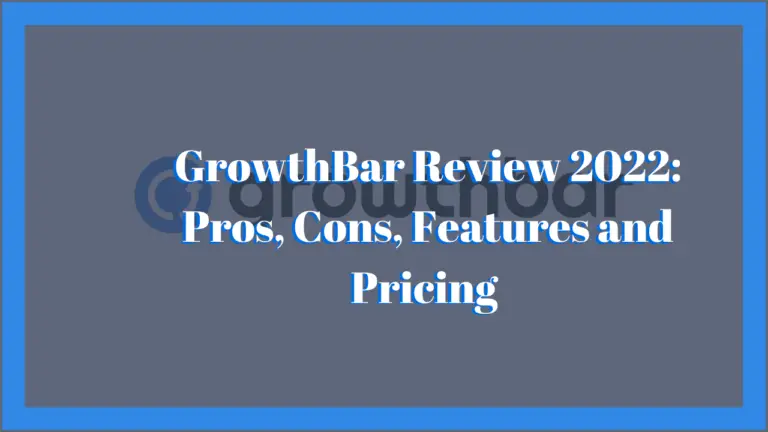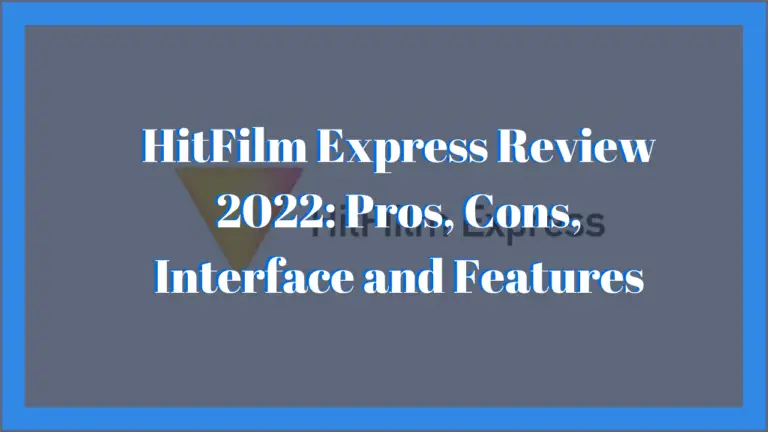Essential Plugins for Multilingual WordPress Websites 2023
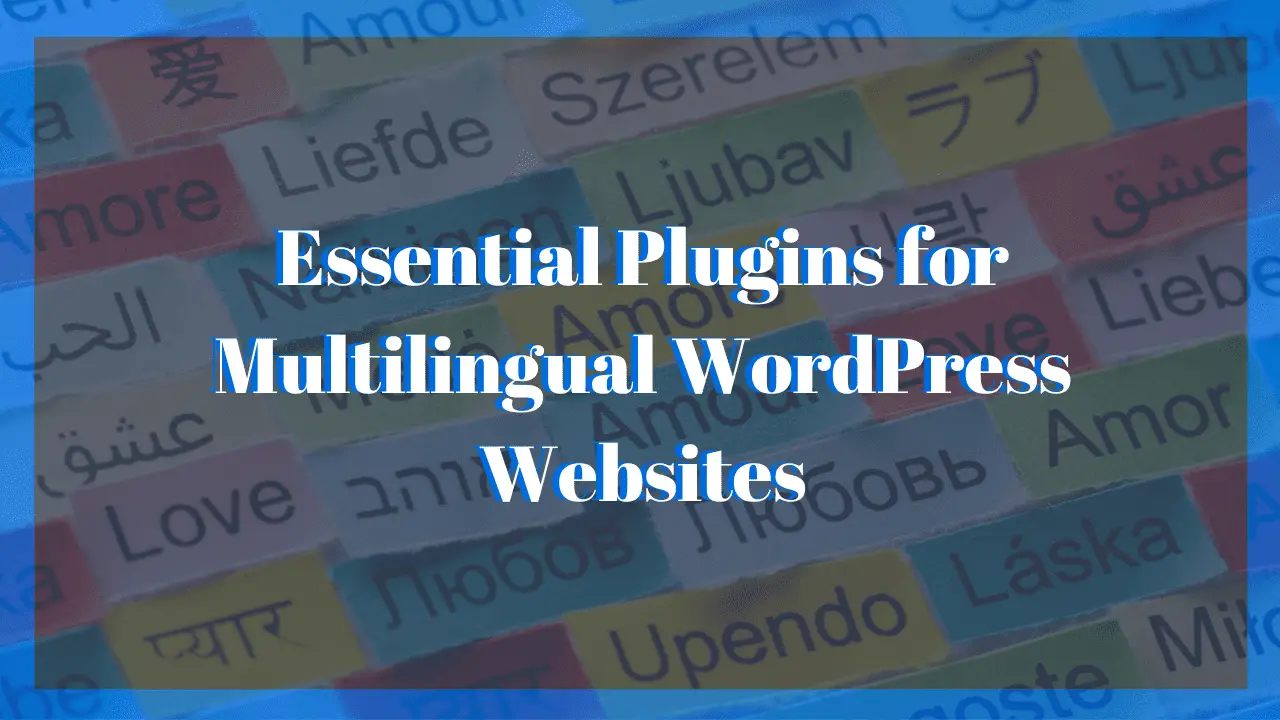
Got no time to read? We got you. Please watch the video below.
If you want to expand your online presence and cater to a global audience, making your WordPress website multilingual is a strategic move. However, managing multiple languages and translations can be challenging without the right tools. That’s where essential plugins for multilingual WordPress websites come in. In this guide, we’ll explore the importance of these plugins and introduce you to some top choices to consider.
Understanding Multilingual WordPress Websites
What Are Multilingual Websites?
Multilingual websites are those that provide content in multiple languages. They are crucial for reaching a diverse audience and breaking down language barriers. Whether you’re running a business website, a blog, or an e-commerce store, offering content in different languages can significantly enhance your online presence.
Why Do You Need Multilingual Websites?
Global Reach and Audience Expansion
The primary reason for having a multilingual website is to extend your reach to a global audience. The internet has broken down geographical barriers, making it possible for people worldwide to access your content. By offering your website in multiple languages, you can connect with individuals who might not be proficient in your website’s default language.
Expanding your audience globally can open up new markets and opportunities for your business. Whether you’re an e-commerce store, a blog, or a service provider, reaching a broader international audience can increase traffic, customer engagement, and potential sales.
Improved User Experience
A multilingual website significantly enhances the user experience. Visitors are more likely to engage with your content when they can access it in their preferred language. This makes navigation easier and ensures your message is effectively communicated.
A positive user experience can lead to a longer time on your website, increased page views, and higher conversion rates. When visitors feel comfortable and confident while navigating your site, they are more likely to take the desired actions, whether purchasing, signing up for a newsletter, or contacting your business.
SEO Benefits and Search Engine Visibility
Multilingual websites can have a substantial impact on your search engine rankings. Search engines like Google aim to provide users with the most relevant and user-friendly results. When your website is available in multiple languages, it becomes more relevant to users who speak those languages, increasing the chances of ranking higher in search results for relevant queries.
Moreover, multilingual websites allow you to implement essential SEO practices specific to each language, such as optimizing metadata, using hreflang tags, and creating language-specific sitemaps. These practices signal to search engines that your website is designed to cater to a diverse audience, which can boost your overall SEO performance.
Cultural Sensitivity and Inclusivity
Language is not just a means of communication; it’s also closely tied to culture and identity. By offering content in different languages, you demonstrate cultural sensitivity and inclusivity. This shows your commitment to welcoming diverse visitors and respecting their cultural backgrounds.
Creating an inclusive online environment can help foster a sense of belonging and trust among your audience. When people feel respected and valued, they are more likely to engage positively with your brand and become loyal customers or followers.
Competitive Advantage
In many industries, having a multilingual site has become a competitive advantage. If your competitors already offer their content in multiple languages and you’re not, you may miss out on potential customers or readers who prefer content in their native languages.
Staying ahead of or at least on par with your competitors regarding multilingual support can help you maintain your market position and even gain an edge in attracting international customers or readers.
Challenges of Managing Multilingual Content in WordPress
Creating and maintaining a multilingual website using WordPress Multilingual plugins can be incredibly beneficial, but it comes with challenges. Understanding these challenges is essential for effectively addressing them:
1. Content Translation and Quality Assurance
Challenge: Translating content accurately and maintaining quality across multiple languages can be time-consuming and challenging. Machine translation may not always capture nuances correctly.
Solution: Invest in professional translation services or native speakers to ensure high-quality translations. Some WordPress Multilingual plugins offer translation management tools to streamline this process.
2. Consistency Across Languages
Challenge: Maintaining consistency in terminology, tone, and style across multiple language versions of your content can be tricky.
Solution: Develop a style guide or glossary that translators can reference to ensure consistency. WordPress Multilingual plugins often provide features for managing translations, making it easier to maintain uniformity.
3. Content Synchronization
Challenge: Keeping content synchronized between different language versions can become complex, especially as your website grows.
Solution: Choose a Multilingual plugin that offers synchronization capabilities. This feature ensures that changes made to one language version are reflected in others automatically.
4. Multilingual SEO Optimization
Challenge: Ensuring that each language version of your content is optimized for SEO can be challenging. This includes managing hreflang tags and language-specific metadata and avoiding duplicate content issues.
Solution: Use a plugin with built-in SEO features, or consider adding a dedicated SEO plugin that supports multilingual SEO. Implement hreflang tags and set up language-specific sitemaps to help search engines understand your content’s language targeting.
5. User Experience
Challenge: Providing an intuitive and seamless user experience for visitors who speak different languages can be complex, as it involves implementing language switchers, navigation menus, and clear language options.
Solution: Utilize multilingual plugins that offer language switcher widgets or menu options. Ensure that navigation is straightforward, with clear language choices for users to select their preferred language.
6. Compatibility Issues
Challenge: Some WordPress themes and plugins may not be fully compatible with WordPress Multilingual plugins, leading to conflicts and functionality issues.
Solution: Prioritize themes and plugins known for their compatibility with WordPress Multilingual solutions. Regularly update all components to minimize compatibility issues.
7. Performance Concerns
Challenge: Running a multilingual site with multiple language versions can impact website performance, including page load times.
Solution: Optimize your website for performance using caching plugins, content delivery networks (CDNs), and image optimization. Additionally, choose a hosting provider that offers fast and reliable server resources.
8. Maintenance and Updates
Challenge: Maintaining a multilingual website is an ongoing process that requires regular updates, content additions, and translations.
Solution: Establish a maintenance schedule to update content, plugins, and translations regularly. Stay informed about updates and improvements in WordPress Multilingual plugins to take advantage of new features and enhancements.
Essential Multilingual WordPress Plugins
Now, let’s take a closer look at these essential multilingual WordPress plugins, each designed to make your journey to a multilingual WordPress site smoother and more efficient:
1. WPML (WordPress Multilingual Plugin)
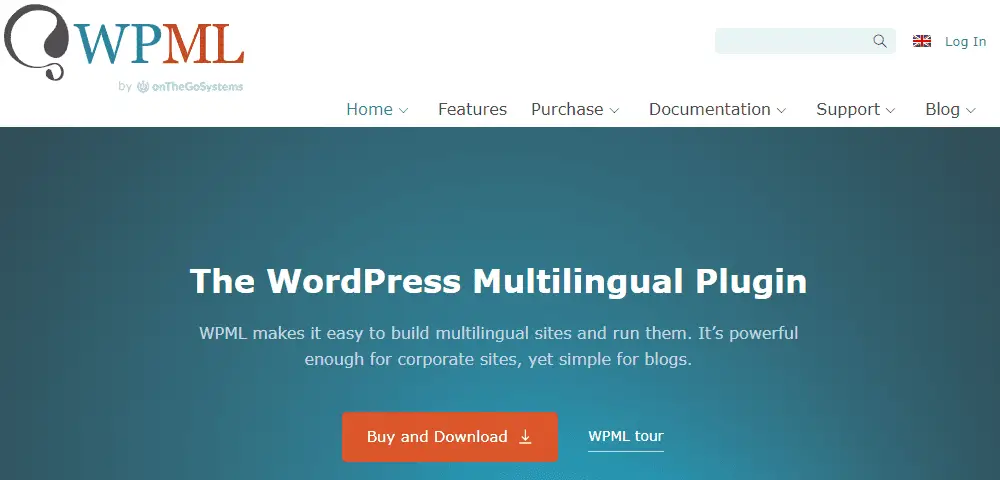
WPML is a feature-rich WordPress translation plugin that streamlines the translation process for your WordPress site. It offers an intuitive interface for translating your content into multiple languages. With WPML, you can:
Easily manage translations for pages, posts, custom post types, and even theme and plugin texts.
Maintain language-specific URLs, which enhances SEO for your WordPress site.
Implement hreflang tags to inform search engines about the language targeting of your pages.
Choose from various language switcher options to provide a seamless experience for your visitors.
Access excellent compatibility with a wide range of WordPress themes and plugins.
WPML is an all-in-one solution for creating a truly multilingual WordPress site that appeals to diverse audiences.
2. Polylang
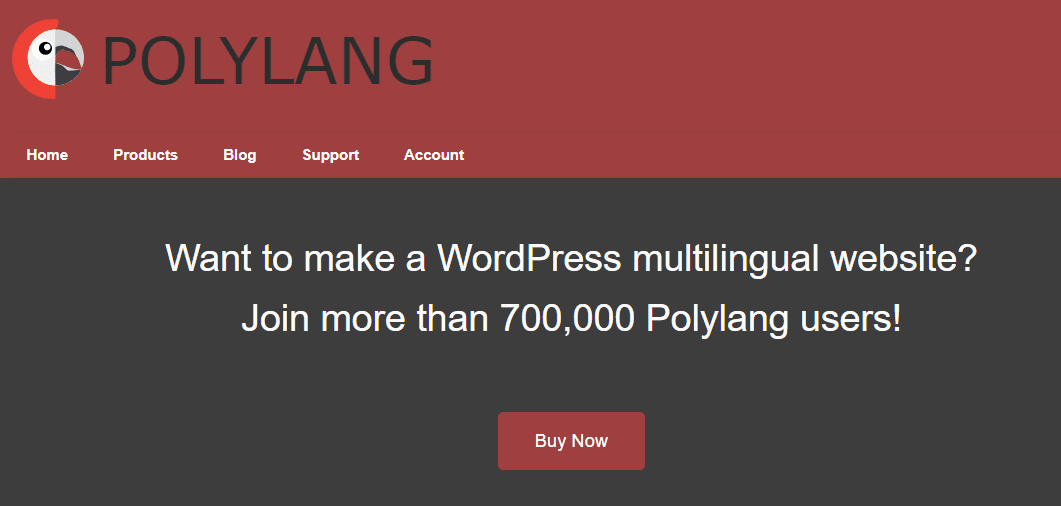
Polylang is renowned for its simplicity and effectiveness as a WordPress translation plugin. It provides the tools you need to easily create a multilingual WordPress site. Here’s what Polylang offers:
An uncomplicated setup process that doesn’t require a steep learning curve.
Support for multiple languages, enabling you to publish content in your desired languages.
A user-friendly interface for translating posts, pages, categories, and tags.
Assigning different languages to different posts and categories gives you complete control.
Compatibility with various WordPress themes and plugins, ensuring smooth integration.
If you’re looking for a straightforward and efficient way to make your WordPress site multilingual, Polylang is an excellent choice.
3. TranslatePress
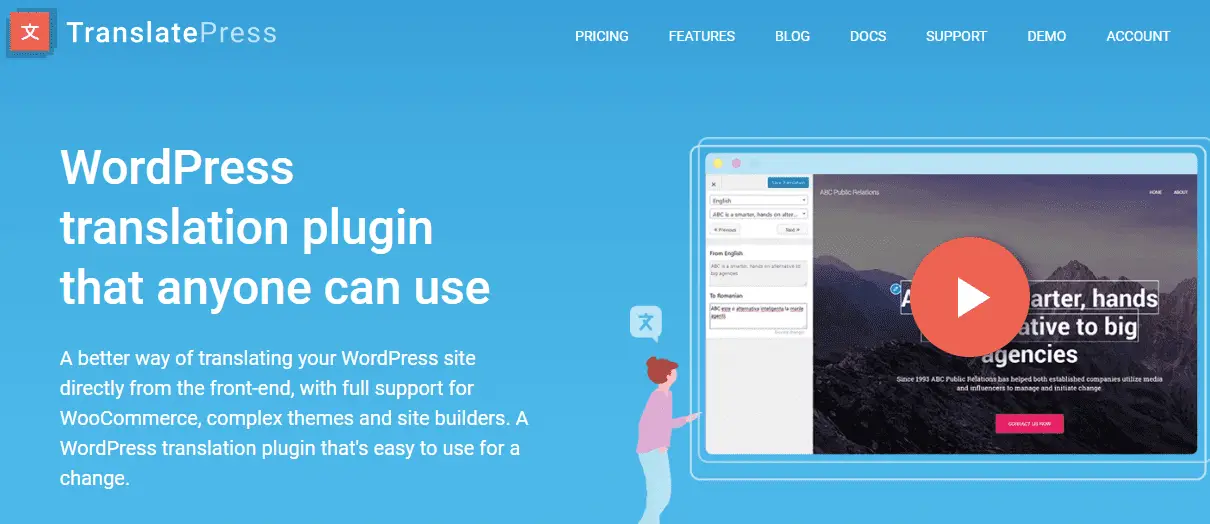
TranslatePress is a powerful WordPress translation plugin that provides a unique approach to creating multilingual content on your WordPress site. Key features of TranslatePress include:
A visual translation editor that allows you to see translations in real-time on your site, making the process more intuitive.
The ability to translate posts and pages and all other site elements, such as forms, menus, and WooCommerce products.
SEO-friendliness with features like automatic hreflang generation and SEO title translation.
Compatibility with popular page builders like Elementor and Divi, ensuring seamless translation of your site’s layout.
Support for unlimited languages, enabling you to cater to a global audience.
TranslatePress empowers you to create a multilingual WordPress site focusing on user experience and SEO.
4. Weglot
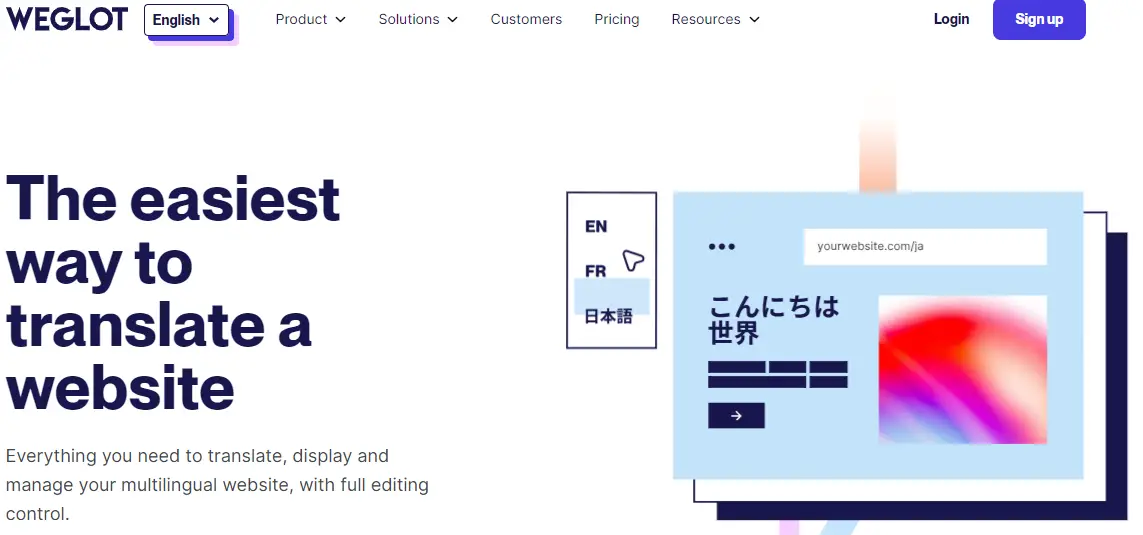
Weglot is an automated WordPress translation plugin that simplifies the translation process for your WordPress site. It stands out for its:
Automatic translation capabilities which save you time and effort by translating your content into multiple languages.
Compatibility with various website builders and CMS platforms beyond WordPress.
Integration with other platforms like Shopify, making it suitable for e-commerce sites.
Language detection and redirection ensure visitors see the content in their preferred language.
Easy-to-use interface for managing translations and customizing the look of language switchers.
Weglot is an excellent choice for those prioritizing automation and convenience when creating a multilingual WordPress site.
5. MultilingualPress
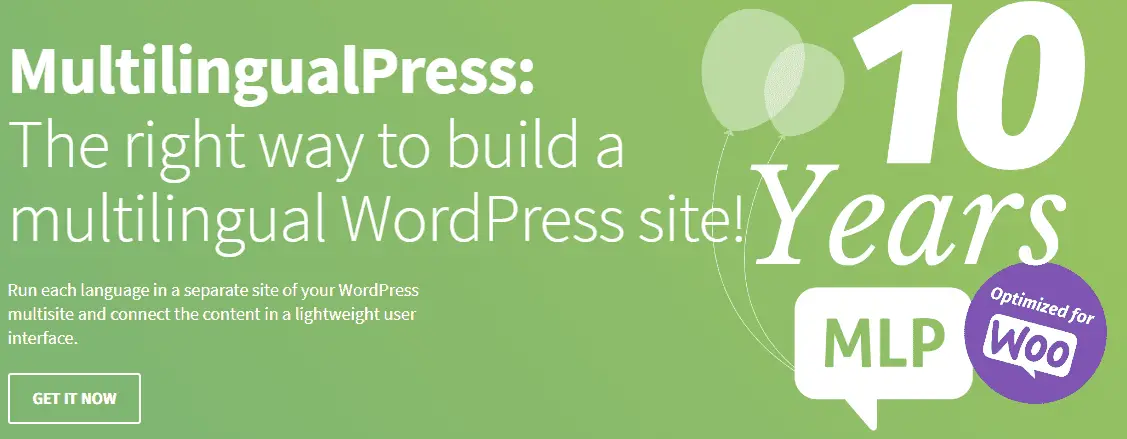
MultilingualPress is designed for multisite networks and offers a scalable solution for managing multilingual content across multiple sites within your WordPress network. Key features include:
Seamless integration with the WordPress multisite feature allows you to create individual sites for different languages.
Centralized content management, making it easier to maintain translations and ensure consistency.
The ability to connect each language site to its own domain or subdomain, enhancing the user experience.
Compatibility with various WordPress themes and plugins, ensuring flexibility.
Efficient updates and synchronization of content across language sites.
If you’re managing a network of WordPress sites and want to extend your content globally, MultilingualPress is a robust choice.
These essential multilingual WordPress plugins cater to different needs and preferences, so carefully evaluate your requirements to choose the one that aligns best with your WordPress site and goals.
6. GTranslate

GTranslate is a versatile WordPress translation plugin known for its ease of use and automatic translation capabilities. Here’s what you can expect from GTranslate:
Automatic Translation: GTranslate automatically translates your website’s content into multiple languages. It utilizes machine translation engines like Google Translate to provide translations instantly.
Language Switcher Options: The plugin provides various language switcher options, including flags, dropdowns, and inline translations, allowing you to choose the style that best fits your WordPress site’s design.
Multilingual SEO: GTranslate generates SEO-friendly URLs and hreflang tags for each language version of your site, ensuring that search engines can properly index and rank your content.
Support for Over 100 Languages: GTranslate supports a wide range of languages, making it suitable for reaching a global audience.
Compatibility: It seamlessly integrates with most WordPress themes and plugins, ensuring a smooth translation process without conflicts.
GTranslate is an excellent choice for those looking for a quick and automated way to make their WordPress site multilingual, especially if you have content in various languages.
7. WPGlobus

WPGlobus is a WordPress translation plugin that offers a unique approach to creating multilingual content on your WordPress site. Here’s what sets WPGlobus apart:
Content Localization: WPGlobus allows you to create multiple language versions of your content within the same post or page. This means you can translate specific sections or elements of a page, providing fine-grained control over your translations.
No Duplicate Posts: Unlike other multilingual plugins that create separate posts for each language, WPGlobus keeps all translations within a single post or page, reducing clutter and simplifying content management.
Simple Interface: The plugin offers a straightforward, user-friendly interface for translating and managing content. You can switch between languages easily while editing.
Language Switcher: WPGlobus provides a customizable language switcher that you can place in your site’s header, footer, or widget area for visitors to switch between languages.
Compatibility: It is designed to work smoothly with various WordPress themes and plugins.
WPGlobus is an ideal choice for those who want a unique approach to content localization, allowing for more granular control over translations while maintaining a clean and organized WordPress site.
SEO Strategies for Multilingual Sites
Optimizing your multilingual WordPress site for search engines is crucial to ensure your content effectively reaches its intended audience. Here are some proven SEO strategies for multilingual sites:
1. Implement Hreflang Tags
Hreflang tags are a crucial component of multilingual SEO. They tell search engines which language and region each page is intended for, helping search engines display the correct version of your content to users in different locations. To implement hreflang tags:
Ensure that each page on your WordPress site includes the appropriate hreflang tag in the HTML header.
Use the “x-default” hreflang tag to specify a default language or region for users who don’t match any other language or region targeting.
2. Use Language-Specific URLs
Language-specific URLs, or internationalized domain names (IDNs), play a significant role in multilingual SEO. They provide clarity to search engines and users about the language and region of your content. For example:
Use country code top-level domains (ccTLDs) for each language version of your site (.fr for French and .es for Spanish).
Alternatively, organize language-specific content by using subdomains (fr.example.com, es.example.com) or subdirectories (example.com/fr, example.com/es).
3. Optimize Metadata for Each Language
Ensure that your meta titles and descriptions are translated and optimized for each language version of your content. This improves SEO and enhances click-through rates in search engine results pages (SERPs). Key points to consider:
Use relevant keywords in meta titles and descriptions while keeping them culturally appropriate for each target audience.
Create unique, compelling meta-content for each language to engage users effectively.
4. Create Language-Specific Sitemaps
Generate separate XML sitemaps for each language version of your WordPress site. This helps search engines discover and index your content correctly. Steps to create language-specific sitemaps:
Use tools like Yoast SEO or Rank Math to generate language-specific sitemaps.
Submit each sitemap to Google Search Console and other search engine webmaster tools.
5. Monitor and Analyze SEO Performance
Regularly monitor the SEO performance of your multilingual site using tools like Google Analytics and Google Search Console. Pay attention to:
Organic search traffic trends for each language version.
Click-through rates, impressions, and keyword rankings in different languages.
Crawl errors or issues reported in Google Search Console.
6. Quality Content in Each Language
High-quality, unique content is a fundamental aspect of SEO. Ensure that your translations are not only accurate but also provide value to your audience. Avoid using automated translation tools for important content, which may result in awkward phrasing or inaccuracies.
7. Localize Content
Consider localizing your content to suit each target audience’s cultural nuances and preferences. This can involve adapting the language, imagery, design elements, and product offerings where applicable.
By implementing these SEO strategies for your multilingual WordPress site, you can effectively enhance its visibility in search engine results and reach a broader audience. Regularly review and adapt your SEO efforts to stay competitive in the ever-evolving world of search engine optimization.
In Conclusion
The world is more connected than ever, and expanding your WordPress website to cater to diverse global audiences is essential. Multilingual websites break down language barriers, improve user experiences, and boost SEO rankings. In this guide, we’ve highlighted the significance of essential plugins for creating multilingual WordPress sites and introduced top choices to streamline your journey.
From versatile options like WPML and user-friendly solutions like Polylang to real-time editing with TranslatePress and automation via Weglot, these plugins cater to various needs. MultilingualPress excels for multisite networks, offering scalability.
These essential plugins empower you to engage global audiences, enhance SEO, and create user-friendly multilingual WordPress sites. Expand your website’s horizons, embrace linguistic diversity, and reach a broader audience with these powerful tools. Unlock the full potential of your WordPress site and make a global impact today.
Explore more WordPress Plugin related posts below:
Best WordPress Plugins To Start With 2023 – If you’re new to WordPress or simply looking to enhance your site’s functionality, our comprehensive guide on the best WordPress plugins for 2023 is a must-read. Discover essential plugins to kickstart your website and improve its performance, security, and user experience.
WP Rocket Review 2022: Pros, Cons, Pricing, and Features – Does your WordPress site need a speed boost? Dive into our detailed review of WP Rocket, a leading caching and performance optimization plugin. Learn about its pros, cons, pricing, and features to make an informed decision about improving your site’s loading times.
Elementor Review: The Best WordPress Page Builder – Building stunning, responsive web pages without coding expertise has never been easier with Elementor. Explore our review of this popular WordPress page builder to understand its capabilities, advantages, and how it can transform your website design and development process.
These articles will provide valuable insights into the world of WordPress plugins, helping you make informed decisions to optimize your website’s performance and functionality.
